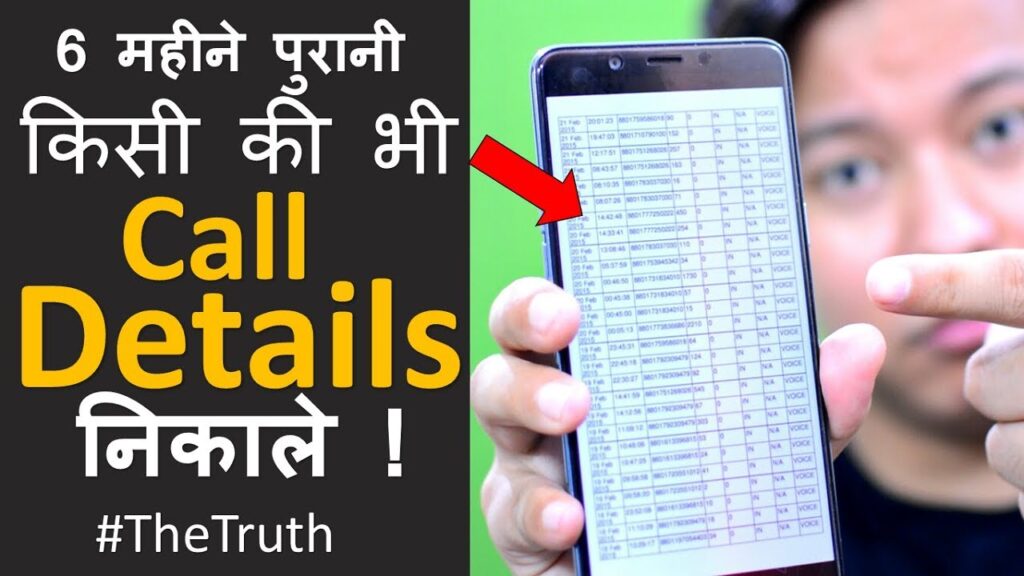In today’s world of digital connectivity, understanding how to access call details can be essential for various personal or professional reasons. Whether you need to retrieve information for billing disputes, monitor usage, or track missed calls, accessing call details should always be done responsibly and ethically. This guide walks you through the legitimate methods of obtaining call details while respecting privacy laws and ethical boundaries.
1. What Are Call Details?
Call details include information such as:
- Date and time of the call
- Duration of the call
- Caller and receiver numbers
- Call type (incoming, outgoing, or missed)
Call detail records (CDRs) are usually maintained by telecom service providers for billing and operational purposes.
2. Legal and Ethical Considerations
Before proceeding, it is important to note:
- Privacy Laws: Accessing someone else’s call details without their consent is illegal in most countries.
- Consent Requirement: Ensure you have proper authorization or legal rights to access the call details.
- Service Provider Policies: Telecom companies have strict rules regarding data access.
Always comply with the legal framework of your country to avoid serious consequences.
3. Methods to Get Call Details
Here are legitimate ways to obtain call details:
a) Through Your Telecom Provider
Most telecom operators provide access to call records for account holders. Steps include:
- Log in to Your Account: Visit the service provider’s website or app and log in with your credentials.
- Navigate to Call History: Look for the section labeled “Call Details” or “Usage History.”
- Download or View: You can usually view or download call logs for a specific period. Some providers allow access to up to six months of data.
- Request Detailed Records: For older records, contact customer support. You might need to provide identification proof and a reason for the request.
How to Get Call Details
b) Requesting a Statement
If online access is unavailable:
- Visit a Store: Go to a nearby branch of your telecom provider.
- Submit a Written Request: Fill out the required forms and provide identification.
- Collect Records: After verification, the provider will share the details, either as a printout or by email.
c) Using Telecom Apps
Many telecom companies offer mobile apps that include features like call logs and usage summaries. Download the app, log in, and navigate to the relevant section for call details.
d) Legal Requests for Call Details
If you require someone else’s call details for legitimate reasons (e.g., legal disputes or law enforcement investigations):
- Court Orders: Obtain a legal order from the court directing the telecom provider to release the records.
- Police Assistance: In cases of criminal investigations, law enforcement agencies can request call records directly from the provider.
4. What to Do If You Encounter Issues
If you’re unable to access call details:
- Check Eligibility: Ensure you are the account holder or authorized person.
- Update Contact Information: Ensure your account details are up-to-date to prevent access issues.
- Seek Customer Support: Contact the telecom provider’s help desk for assistance.
5. Alternatives to Access Call Details
If you don’t have direct access to call records:
- Use Call Logs on Your Phone: Most smartphones maintain a record of recent calls in the call log.
- Install Usage Tracker Apps: Some apps can track and display call details, provided they have proper permissions.
6. Common Misconceptions
- Hacking Call Records: Accessing call details through unauthorized means is illegal and unethical.
- Third-Party Services: Be wary of websites or apps claiming to provide call records for a fee. These are often scams or operate illegally.
Conclusion
Accessing call details should always be approached with caution and respect for privacy laws. Legitimate methods, such as contacting your telecom provider or using legal channels, are reliable and ethical ways to retrieve the information you need. Always avoid unauthorized methods and prioritize data privacy and security.
By following these guidelines, you can access call details responsibly while maintaining trust and compliance with the law.
